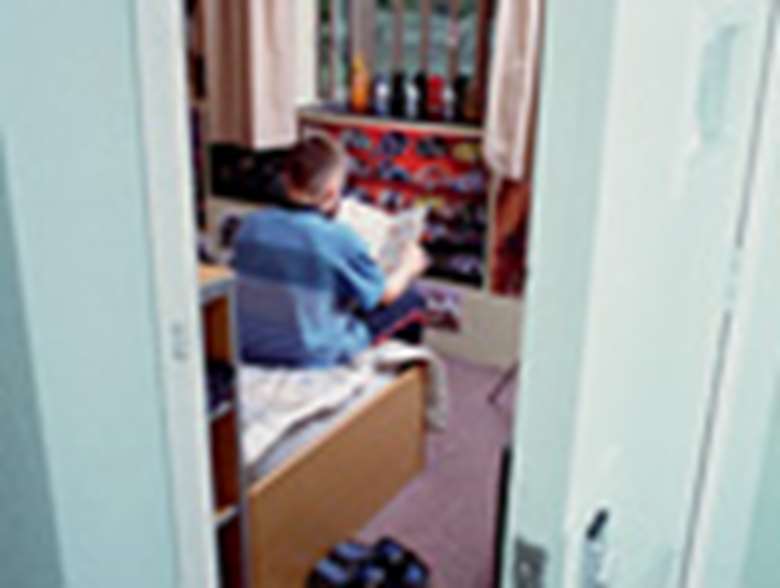Analysis: Youth custody - Are secure homes on their way out?
Tuesday, March 18, 2008
As Gladstone House, a secure children's home in Liverpool prepares to be shut down, Sue Leaner explores why local authorities have opted to rid themselves of these facilities in recent years and what can be done to reverse this damaging trend.

One of the country's best performing children's homes is to close. Gladstone House in Liverpool, which has 18 beds for boys aged from 10 to 17, will be shut down at the end of this month (CYP Now, 21-27 November 2007).
Five years ago, there were 31 secure children's homes in England and Wales. There are now only 19 and it seems this decline is set to continue. "The way it is going at the moment, the only trend I can see is downwards," says Roy Walker, deputy chair of the Secure Accommodation Network (SAN), which represents secure children's homes.
Secure children's homes are used to accommodate young offenders aged 10 to 13 and 14 to 17-year-olds who are assessed as vulnerable. They are regarded by charities such as the Howard League for Penal Reform as the only suitable form of custody for under-18s. Gladstone House is operated by Liverpool City Council and is funded via a contract with the Youth Justice Board (YJB).
Increased costs
"The home doesn't house any Liverpool children as it takes children from all over the country," says a Liverpool City Council spokesman. "Last year it was inspected and passed with flying colours. Ofsted said it was one of the best facilities in the country. However, it recommended that the home increase its number of staff and there is obviously a cost involved in doing that."
Liverpool Council requested an extra £1m from the YJB to pay for the extra staff. But John Kemmis, chief executive of Voice, a charity that provides advocacy for children in care, says: "Unfortunately the YJB is at the mercy of a provider who is charging too much."
In a letter to Kemmis, Ellie Roy, chief executive of the YJB, said: "Gladstone House proposed an increase in bed costs amounting to about £1m, which we were unable to meet given our limited resources and other financial pressures. It is regrettable negotiations to reverse the steep price increase were unsuccessful."
Kemmis appealed to the government to step in to stop the closure of Gladstone House, but was informed by junior children's minister, Kevin Brennan, that he was unable to intervene.
Alastair Davidson, manager of Gladstone House, is worried about the impact the closure will have on vulnerable young offenders. "These teenagers may have to go to secure training centres (STCs) or young offender institutions (YOIs) where they are treated like young adults," he warns. England's four STCs are run by private contractors.
The harsh regimes of YOIs could have led a number of teenagers over the years to commit suicide. According to the Ministry of Justice, in 2007 alone seven young offenders under the age of 21 who were placed in young offender institutions, took their own lives. It is a very different story in secure children's homes, where the last suicide took place more than 17 years ago.
However, it is a lot less expensive to place someone in a YOI because the ratio of staff to young people is much lower. "Good services cost money. All the staff at Gladstone are qualified to NVQ level 3. Everyone goes to school and we offer the children 50 weeks of education a year," says Davidson. But secure children's homes are expensive places to maintain. "What price do you put on a child's life?" he asks. Davidson believes there will always be tension, as long as secure children's homes are run by local authorities.
Walker says a different view is needed: "Secure units are not understood by local authorities who view them as an expensive burden. We see it as a positive action where we can bring care, education and health under one roof."
He also argues secure children's homes are not always the most expensive option. "Private providers are charging between £5,000 and £7,000 a week for a place in an open children's home. This compares to about £4,200 a week in a secure children's home," he says.
National strategy
SAN has repeated calls made for a national strategy for secure care. This is the only way to halt the closures, according to Walker, as it would examine demand and geographical distribution and manage the provision. SAN wants to see the government running secure children's homes. Walker says: "If it did, it would ensure local authorities had proper plans for when the child returns to the community." SAN's other suggestions are for the government to subsidise local authorities to fund the homes, or for local authorities to form regional partnerships.
Frances Crook, director of the Howard League for Penal Reform, says: "One answer could be to have some kind of central fund that can help ringfence and protect secure care homes."
If changes are not brought in soon, secure homes might become a thing of the past.
THE COST OF CUSTODY
Average cost of keeping a child in custody, 2005/06
- Secure children's homes - £185,532
- Secure training centres - £172,263
- Young offender institutions - £5,310
Total cost of keeping children in custody, 2005/06
- Secure children's homes - £43.6m for 235 places
- Secure training centres - £47.2m for 274 places
- Young offender institutions - £147m for 2,768 places
Source: Youth Justice Board.





